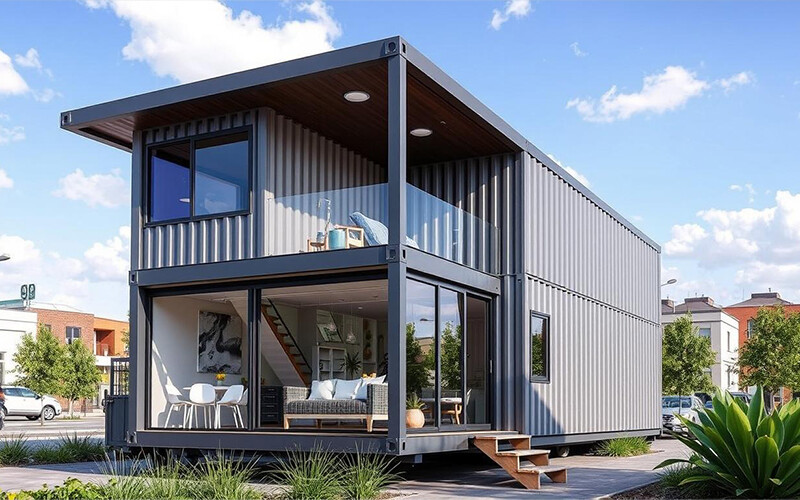news

Sustainable materials play a pivotal role in enhancing the efficiency, durability, and environmental impact of container houses. As the demand for eco-friendly construction methods grows, these innovative structures are increasingly incorporating green building practices that not only benefit the environment but also improve living conditions and reduce operational costs.
Insulation and Energy Efficiency
One of the key areas where sustainable materials make a significant difference is insulation. High-performance insulation made from recycled materials such as denim, cork, or sheep’s wool can be used to line the interior walls of container homes. These materials offer excellent thermal resistance, helping to maintain comfortable indoor temperatures year-round. By reducing the need for heating and cooling, this type of insulation significantly lowers energy consumption and utility bills.
Roofing Solutions
Roofing is another critical component where sustainable materials enhance container house efficiency. Green roofs, covered with vegetation, provide natural insulation while absorbing rainwater and reducing urban heat island effects. Solar panels integrated into the roof design harness renewable energy, further decreasing reliance on non-renewable resources. Additionally, reflective roofing materials help keep the interior cooler by reflecting sunlight away from the structure.
Flooring Options
Sustainable flooring options contribute to both the aesthetics and functionality of container homes. Bamboo, reclaimed wood, and cork are popular choices due to their durability, aesthetic appeal, and minimal environmental impact. These materials are not only attractive but also promote healthier indoor air quality compared to synthetic alternatives. Furthermore, they often require less maintenance over time, adding to their long-term value.
Water Management Systems
Effective water management systems are essential for maximizing the efficiency of container houses. Rainwater harvesting systems collect and store precipitation for later use in irrigation or even household needs, reducing dependence on municipal water supplies. Greywater recycling systems treat and reuse water from sinks, showers, and washing machines, further conserving water resources. These systems are often constructed using sustainable materials and technologies designed to minimize waste and maximize efficiency.
Interior Finishes and Paints
Using low-VOC (volatile organic compounds) paints and finishes inside container homes improves indoor air quality and reduces harmful emissions. These environmentally friendly products come in a variety of colors and finishes, allowing homeowners to personalize their spaces without compromising on health or sustainability. Additionally, utilizing reclaimed or recycled materials for countertops, cabinetry, and other interior features adds character while minimizing environmental footprint.
Conclusion
The integration of sustainable materials in container house construction enhances overall efficiency, promotes environmental stewardship, and creates healthier living environments. From superior insulation and energy-efficient roofing to eco-friendly flooring and advanced water management systems, these innovations demonstrate the potential for container homes to lead the way in sustainable architecture. By embracing these green solutions, we can build resilient, cost-effective, and aesthetically pleasing living spaces that meet the needs of today without compromising the future.
Need Us to
Contact You?
We received your message and will contact you as soon as possible.
Thank you for your visit.
